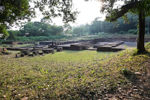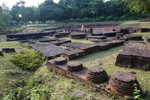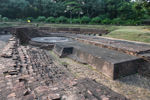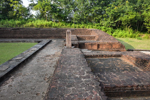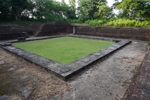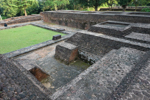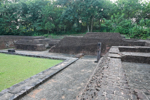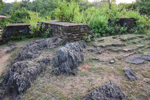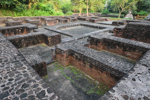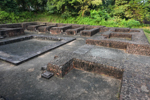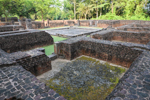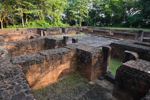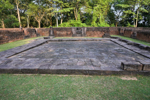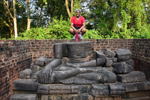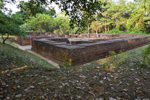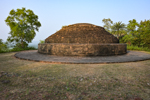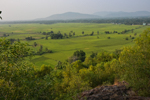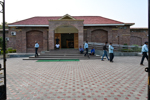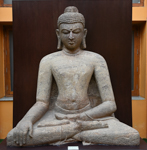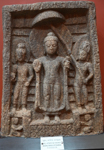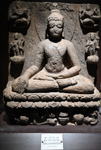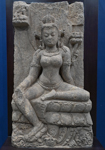Lalitagiri Mahavihara, Odisha, India (Nov 2022)
Lalitagiri, a major Buddhist complex, together with Ratnagiri and Udayagiri, forms the famous Diamond Triangle of Buddhist heritage sites in Odisha. ASI's excavations between 1985–91 revealed a maha stupa on a hilltop containing relics of the Buddha, an apsidal chaitya complex with many stupas, four monasteries, and lots of statues. Among the earliest monasteries, Lalitagiri "maintained a continuous cultural sequence starting from the post Mauryan period (322–185 BC) till 13th century CE". (Source)
Chaityagriha stupa |
Apsidal chaitya with |
Apsidal chaitya (1, 2) |
|
Monastery 1 (more) |
Courtyard |
Empty chaitya |
Thick walls |
Monastery 3 |
Rooms and courtyard |
||
Monastery 4 |
Thick walled rooms |
Courtyard |
|
Chaitya remains (more) |
View of the ruins |
Maha stupa on a hilltop |
View from the hilltop |
ASI's Archaeological Museum at Lalitagiri |
|||
Site museum (info) |
Buddha, Bhumi-sparsh
|
Sarvanivarna |
Samantabhadra |
Samantabhadra |
Kshitigarbha (more) |
Avalokiteshvara |
Maitreya |
Buddha |
Buddha, Miracle |
Buddha, Abhaya |
Buddha, Varadha |
Buddha, Bhumi-sparsh
|
Buddha protected by |
Vajrapani (more) |
Jambhala |
Buddha head |
Aparajita |
Vasudhara |
Prajnaparamita |
Avalokiteshvara |
Maitreya |
Manjushree |
Akshagarbha |
Designed in collaboration with Vitalect, Inc. All rights reserved. |









